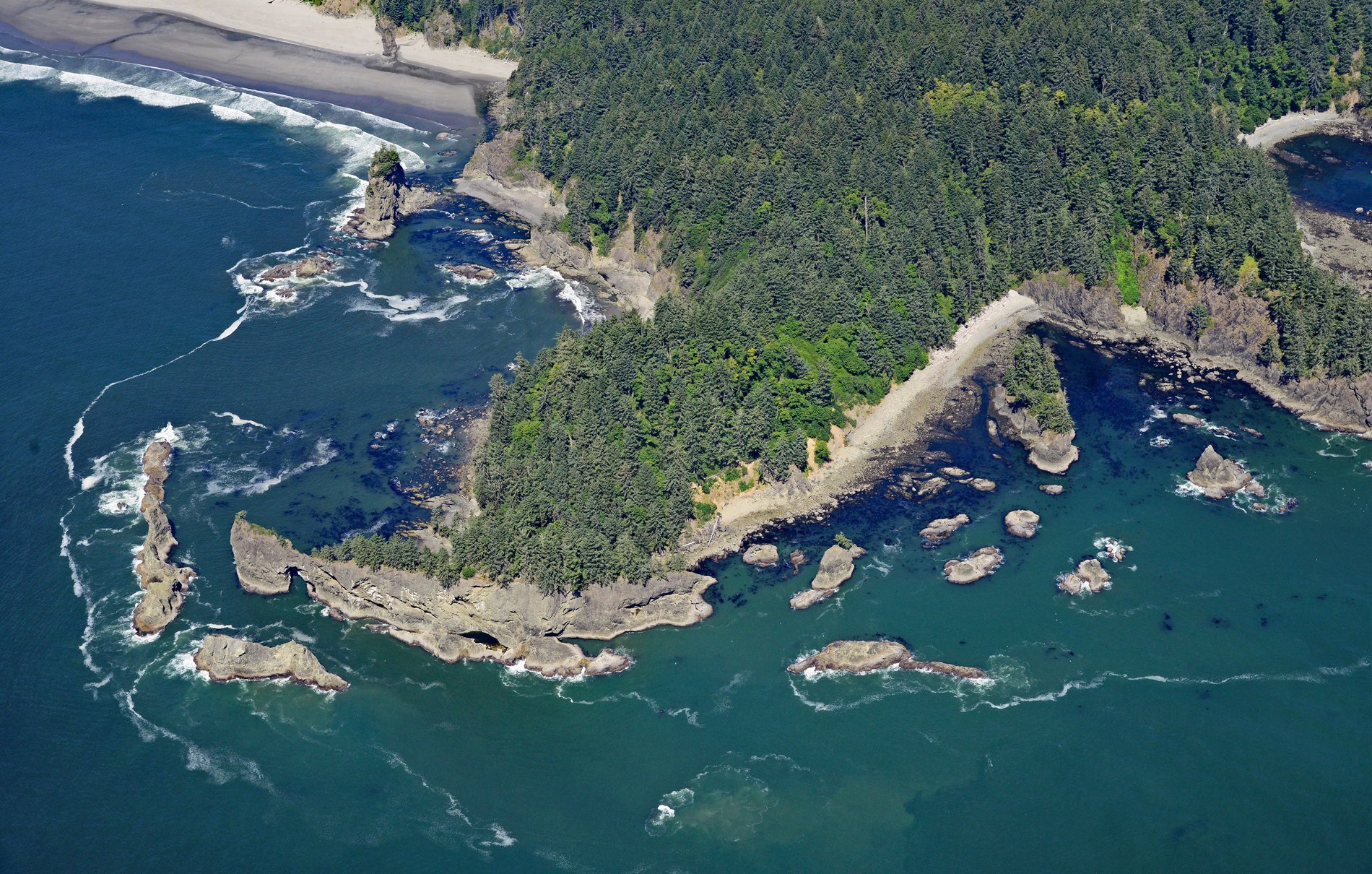Teahwhit Head is a rocky headland with a natural sea arch and the site of a historical shipwreck on the coast of Olympic National Park in the Olympic Coast National Marine Sanctuary, about 12 miles (19 km) southwest of Forks and 2.8 miles (4.5 km) south-southeast of La Push, Washington. The name of the headland is derived from the Chinook jargon word for ‘leg’. The rocks forming Teahwhit Head, as well as those of the offshore Quillayute Needles, consist of thick sequences of intensely sheared marine sedimentary rocks associated with several faults, and exhibiting severe deformation demonstrating the effect of tectonic forces. The sandstone cliffs are adjacent to glacial drift consisting of outwash, till, and lacustrine sediments that represent most of the surface terrain between the Quillayute River and the coast. The headland forms an impassable coastal barrier of sheer cliffs, with differential erosion creating slots and fingers projecting seaward that extend underwater to offshore pinnacles. The area is only accessible either by hiking south from Second Beach at La Push or north from Third Beach on Strawberry Bay.
SS Lake El Pueblo was built in 1919 by the Great Lakes Engine Works in Ashtabula, Ohio on Lake Erie. The steel steamship was 250 feet (76 m) long and displaced almost 2,700 tons. About ten years later, the Russian Merchant Marine acquired and renamed the ship Lamut, and the vessel was transferred to Vladivostok and operated between the North American west coast and the Siberian coast. The name ‘Lamut’ is from the Evens nomadic people that inhabit regions of the Magadan Oblast and Kamchatka east of the Lena River. At the start of World War II from 1941 to 1945, Russian and U.S. Merchant Marine convoys sailed from west coast ports in North America to Arctic ports in the Soviet Union to supply the Russian people and military with food and matériel under the Anglo-Soviet Agreement and U.S. Lend-Lease program. Many unescorted vessels also sailed with supplies, but these voyages were particularly dangerous because of German and Japanese submarines patrolling the great circle route. In 1942, Soviet submarine L-16 was torpedoed and sunk off the Washington coast by the Japanese submarine I-25.
On April 1, 1943, Lamut was northbound off the coast of Washington with cargo loaded at Portland, Oregon and bound for Vladivostok in the Russian Far East. A storm with winds up to 75 knots (139 kph) caused the crew to lose their bearings and the ship went off course and rammed into the cliffs of Teahwhit Head. The ship became lodged in a turbulent slot between a mainland cliff and an offshore pinnacle. On April 2, a distress signal was heard by the U.S. Coast Guard Station Quillayute River at La Push, and patrols were dispatched to search for the beached ship. One patrol found wreckage on Second Beach and sighted the stern section of the grounded ship firmly lodged in the rocks of the headland. A second crew in a surf boat located the ship in the dark, but the waves and current and proximity to the rocks precluded a rescue attempt. Another patrol was sent overland through thick forests and underbrush, and then crawled along a narrow ridge of wet and slippery rocks to a precarious point overlooking the ship, now severely listing to one side. They managed to throw lines to the ship and rescue the entire crew using an improvised Bosun’s chair. The rescue is among the most dramatic events in the annals of the U.S. Coast Guard. Read more here and here. Explore more of Teahwhit Head and La Push here:

